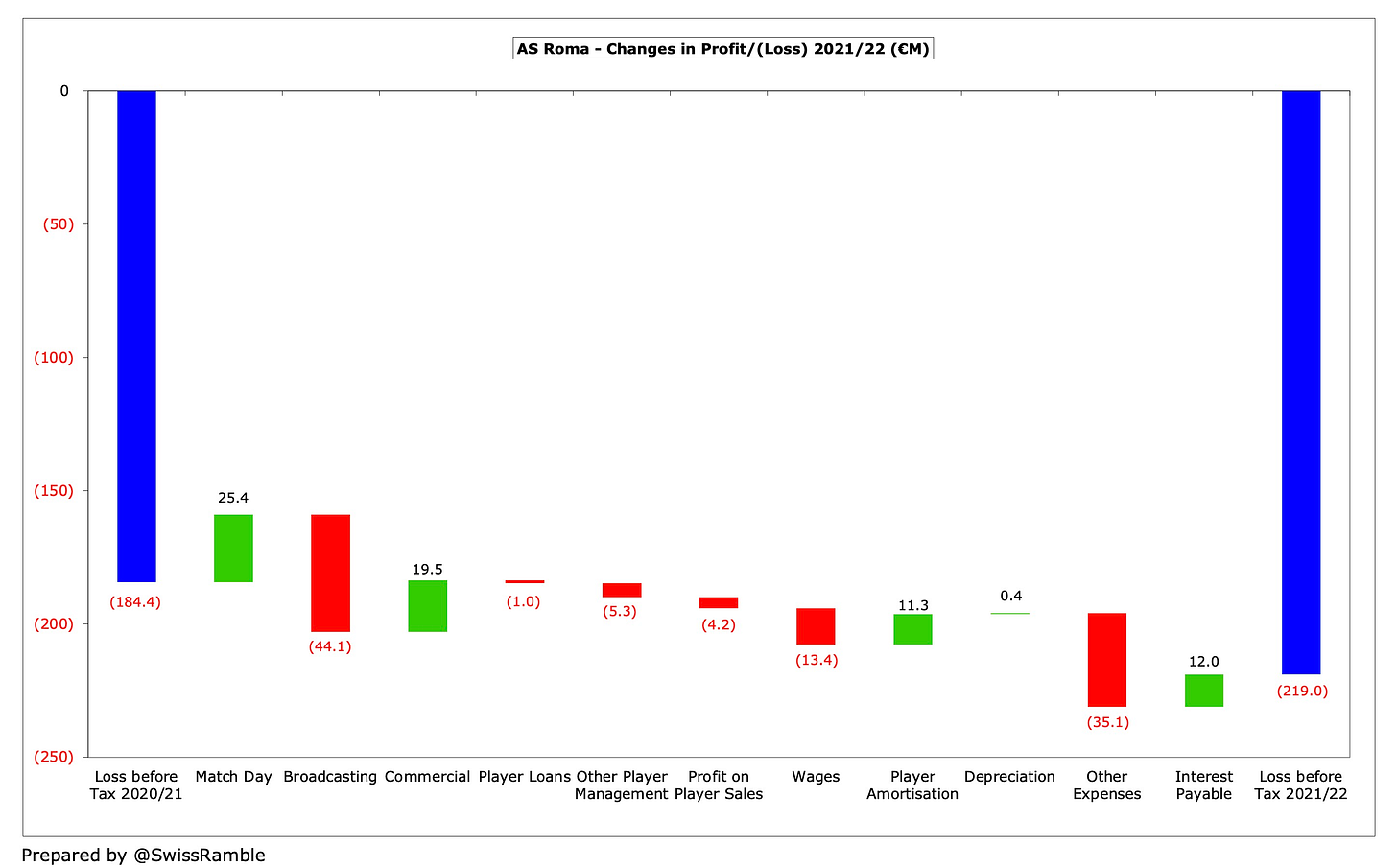After the recent announcement that Lina Souloukou has been appointed as AS Roma’s new chief executive, I thought that it might be interesting to take a look at the financial challenges facing the former CEO of Olympiacos, focusing on the club’s 2021/22 accounts.
These cover a season when Roma finished 6th in Serie A and reached the quarter-finals of the Coppa Italia, but most importantly won their first trophy for 14 years by defeating Feyenoord to win the inaugural Europa Conference League.
This victory was achieved under the guidance of Jose Mourinho, who had replaced Paolo Fonseca at the end of the previous season. It was also Roma’s second season under the ownership of The Friedkin Group, who purchased the club from fellow American James Pallotta in August 2020.
Profit/(Loss) 2021/22
Roma’s pre-tax loss increased by €35m from €184m to €219m, the highest in the club’s history. Revenue was basically flat at €196m, while operating expenses rose €37m (10%) to €391m, though net interest payable fell by a third (€12m) from €36m to €24m.
They actually made a net £4m loss from player sales, while other income from player management fell £5m to £3m.
The return of fans to the stadium meant a steep increase in Roma’s match day revenue, which increased to €26m from just €99k in the prior year. Commercial also rose by €20m (37%) from €53m to €73m, though this was mainly due to player insurance payouts.
However, broadcasting fell €44m (32%) from €137m to €93m, largely because prior year figures included money deferred from the extended 2019/20 season for games played after the June accounting close. Player loans also decreased €1m to €5m.
As a technical aside, this definition of Roma’s €196m revenue is different to the one used in the club accounts of €191m, as I have also included the £5m earned from player loans.
Keep reading with a 7-day free trial
Subscribe to The Swiss Ramble to keep reading this post and get 7 days of free access to the full post archives.






